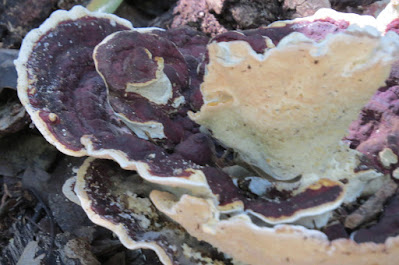Monday November 23th
Day 2 wasn't a very birdy day. One good sighting for the day was at the motel in Marathon. Nice looks at a Yellow-bellied Sapsucker.
From here was a stop at
Long Key State Park. Walked the the
Golden Orb Trail looking for unique Keys trees, plants ad animals.
Long Key, along with Bahia Honda, is also a location for the rejuvenation of the very rare Miami Blue Butterfly. Long Key is also regenerating from effects of Hurricane Irma. Acres of mangrove were killed off by the high surge water. New growth can be seen emerging among the skeletal remains of the ravaged trees.
 |
| Fiddler Crab |
 |
Great Crested Flycatcher
|
The Golden Orb Trail heads through the mangroves, then moves inland through salt pans then higher to tropical hardwoods. Sightings include Seven-year Apple, Wash Wood, Poison Wood, Florida Silver Palm, West Indian Milkberry, Blackbead, Sea Lavender, Beach Spider Lily, Comma, Jamaican Dogwood and Wild Dilly
 |
Sea Torchwood
|
 |
Wash Wood
|
 |
Sea Lavender
|
 |
Seven-year Apple
|
 |
West Indian Milkberry
|
 |
Blackbead
|
 |
| Wild Dilly |
With the help of park staff, I was able to see one witch is part of a re-introduction project. Mature cactus can reach 10 meters in height and have become quite rare due to habitat destruction
 |
A specimen of Key Tree Cactus
|
Apart from the tropical hardwood forest, the property was once used to quarry limestone for the building of the overseas railroad. The limestone was created from an ancient coral reef that existed about two million years ago when almost all of Florida was submerged below a shallow sea. The fossilized coral is evident along the quarry walls.
The
hammock trail features placards identifying the many species trees and plants found here. Such as Poisonwood, Crabwood, Scarlet Cordia, Coma, Blolly, Pigeon Plum, Milkbark, Black Ironwood, Monk Orchid, Triangle cactus, Bahama Strongbark and some unusual fungi.
 |
Lancewood
|


















No comments:
Post a Comment